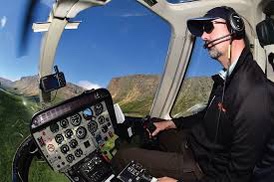Europe (EASA) Helicopter Guide

Updated 2023
EASA’s Rules of the Air provide a basic framework upon which local Aviation Authorities can either add or exempt themselves. In general, most EU countries follow EASA’s rules.
VFR Flight plans?
You should file a flight plan for any flight planned to operate across international borders (i.e. even if within Schengen). Flight plans through controlled airspace can be “transmitted” (ie. by radio) and don’t need to be “submitted” (i.e. an hour before take off).
Visibility rules

The UK notably removed itself from EASA’s very controversial clear-of-cloud rules. Meanwhile EU countries have still adopted them so you need to be careful here, especially if you are a UK pilot. Looking at the 2nd line in the above table requires a cold towel over the head. Let’s say it is a day with cloud base at 1200ft and you have just refuelled at an airport with class D space. The airport is located 1500ft AMSL. You are on the ground therefore at 1500ft AMSL. According to the rule, you must be 1000ft below the cloud which means you have a flight ceiling of 200ft and will possibly not be permitted to take off by the airfield.
In a nutshell, EASA rules don’t allow helicopters to fly VFR in Class D unless they are 1000ft or more below the cloud base. In practical terms this means that you would need a cloud base of 2000ft or above to fly through Class D. In Northern Europe, for example, the cloud base is lower than 2000ft 73% of the time.
The presence of cloud below 4000ft, very common, limits the maximum altitude for VFR flight. Significant cloud with a base of 3000ft limits VFR flights to below 2000ft and a base of 2000ft limits VFR flight to below 1000ft which is generally impracticable. VFR aircraft transiting controlled airspace will often have to route around it.
The distance rule (ie. 5km) is relaxed for helicopters which fly below 140 knots: helicopters may be permitted to operate in less than 1 500 m but not less than 800 m flight visibility, if manoeuvred at a speed that will give adequate opportunity to observe other traffic or any obstacles in time to avoid collision.
Caution if you parked overnight at an airport or hotel that falls with Class D: VFR flights shall not take off when the reported meteorological conditions at that aerodrome are below the following minima:
- the ceiling is less than 450 m (1 500 ft); or
- the ground visibility is less than 5 km.
VFR on top
You may legally fly above cloud (i.e. not in sight of ground) as long as you can maintain the appropriate VFR cloud clearances.
When flying in airspace classes B, C, D, E, F, or G, more than 900 m (3 000 ft) above mean sea level (MSL) or 300 m (1 000 ft) above terrain, whichever is higher, the pilot may elect to fly above a cloud layer (VFR on top). It is even permitted at night.



Can single engine helicopter fly in France at night?
The helicopter needs to be certified for night equipment and the pilot night rated, but yes